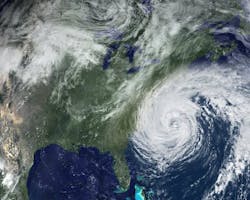Joint Commission Releases Guidelines for Preparing Healthcare Facilities for Natural Disasters
The Joint Commission has published an article in Sentinel Event Alert regarding environmental disasters and how to best prepare for them in hospital settings.
Data shows that weather and climate-related disasters have increased exponentially since 1980 due to climate change. Those disasters have incurred a cost of “over $2.780 trillion” in that timeframe. Fatalities and costs are potentially on pace for new highs thus far in the 2020s.
Healthcare facilities are impacted by disasters of all stripes, including heat waves and flooding. For instance, “hundreds of hospitals on the Atlantic and Gulf Coasts are at risk of flooding during a relatively mild Category 1 or Category 2 hurricane.” These disasters can cause loss of essential utilities and services.
However, Joint Comimssion Emergency Management (EM) standards require organizations to “have a comprehensive [EM] program,” as well as other measures like a “hazards vulnerability analysis (HVA)” and an “Emergency Operations Plan.”
The new guidance also suggests some actions for healthcare organizations to consider. These actions include revisiting and updating emergency plans; establishing and building collaborative relationships with authorities, ambulance providers, and other healthcare organizations in the area; developing a resilient communications infrastructure; planning how to meet essential needs and provide care to staff and patients; and planning and practicing how to evacuate and shelter in place.

